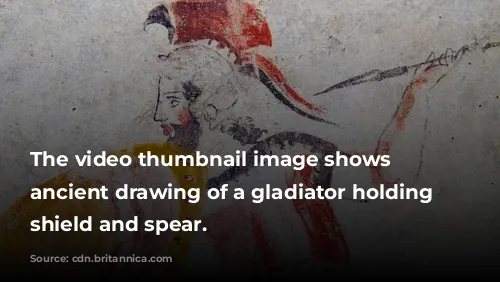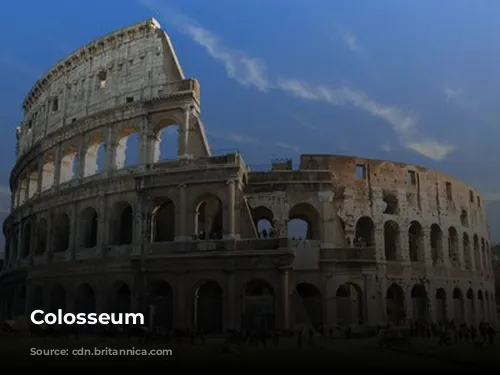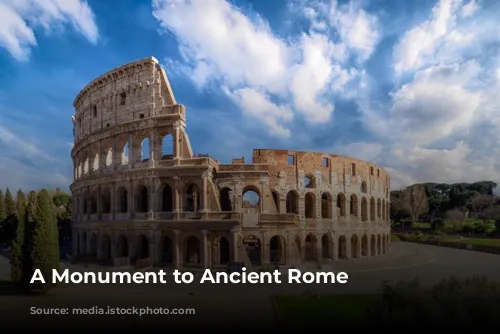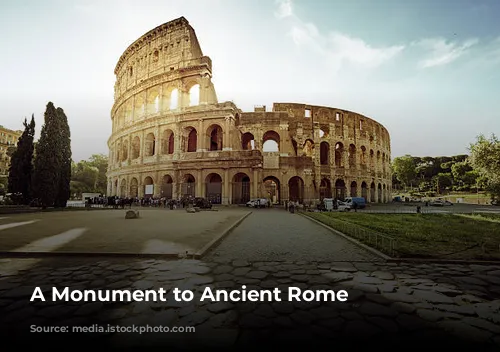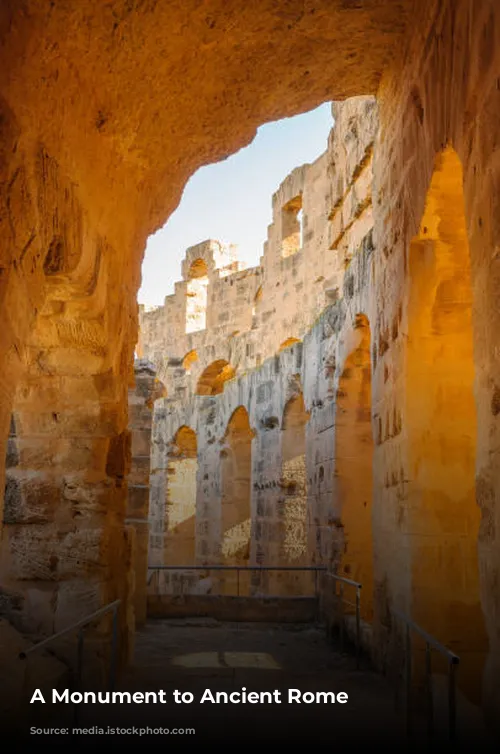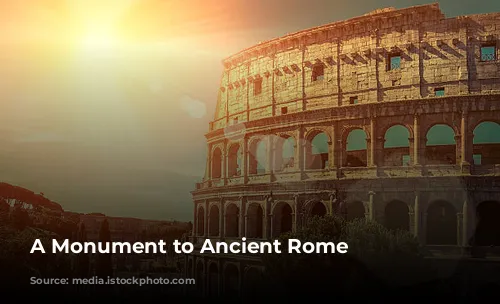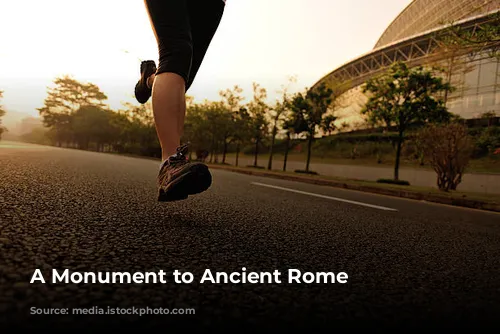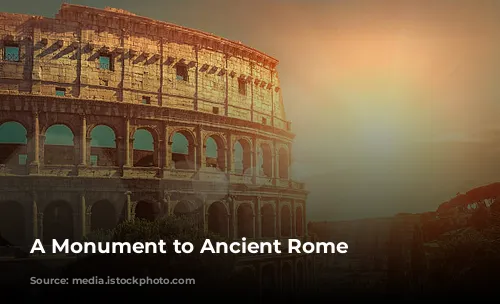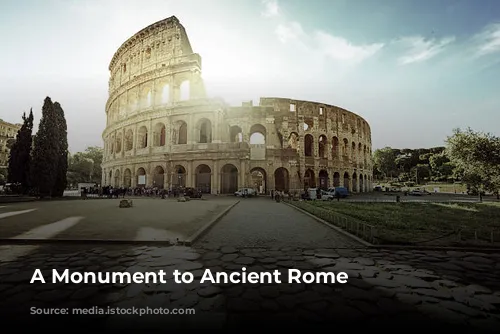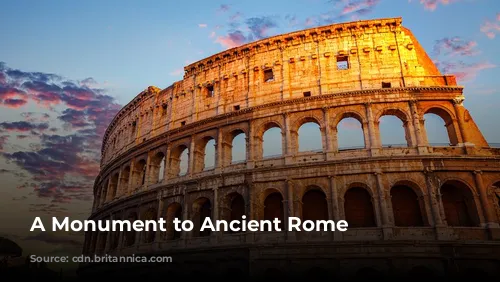Standing as one of the few largely intact structures left from the Roman Empire, the Colosseum is a powerful reminder of ancient Rome’s impressive architectural and engineering skills. It’s not just a historical landmark; it’s also a huge draw for visitors, bringing in a significant amount of tourist revenue for the Italian government. In 2018 alone, the Colosseum, Roman Forum, and Palatine Hill collectively generated over $63.3 million (€53.8 million), making it Italy’s top tourist attraction.
The Colosseum has witnessed both glory and decline. After the fall of the Western Roman Empire, it fell into disrepair. For centuries, it was used for purposes far removed from its original intent. In the 12th century, the Frangipane and Annibaldi families repurposed the arena as their fortress. Later, in the late 15th century, Pope Alexander VI allowed the Colosseum to be used as a quarry. This neglect lasted over a thousand years until state-funded restoration efforts began in the 1990s.
The Birth of a Spectacle
The Colosseum was built in the wake of a turbulent period in Roman history. Its construction was part of a larger imperial effort to revitalize Rome following the tumultuous “Year of the Four Emperors” in 69 CE. Emperor Vespasian, mirroring the traditions of other amphitheaters, intended the Colosseum to be a vibrant entertainment venue. It hosted a variety of spectacles, including thrilling gladiator battles, captivating animal hunts, and even elaborate mock naval battles.
Construction began under Vespasian between 70 and 72 CE. The Colosseum was finally inaugurated in 80 CE by Vespasian’s son and successor, Titus. The fourth story of the Colosseum was added later by Emperor Domitian in 82 CE. It’s interesting to note that the arena was financed by the spoils of war from Titus’s conquest of Jerusalem in 70 CE and built by enslaved Jews from Judaea.
A Colossus of Architecture
The Colosseum is an elliptical amphitheater, often referred to as the Flavian Amphitheater, built during the reign of the Flavian emperors. This architectural marvel is made of stone, concrete, and tuff, rising to four stories at its highest point. Measuring 620 by 513 feet (189 by 156 meters), it could accommodate an impressive 50,000 spectators. The Colosseum is renowned for its use in gladiatorial combat.
The Colosseum stands just east of the Palatine Hill, on the site of Nero’s Golden House. The artificial lake that was the centerpiece of this grand palace complex was drained, and the Colosseum was built on this land. This choice was as much symbolic as it was practical. Vespasian, who ascended to the throne from humble beginnings, sought to replace the tyrannical emperor’s private lake with a public amphitheater that could entertain tens of thousands of Romans.

A Stage for Spectacle
The Colosseum was officially dedicated in 80 CE by Titus during a grand ceremony lasting 100 days, filled with exciting games and events. Later, Domitian completed the construction by adding the topmost story in 82 CE. Unlike earlier amphitheaters, most of which were built into hillsides for extra support, the Colosseum is a freestanding structure of stone and concrete. Its intricate design utilizes a complex system of barrel and groin vaults.
Three of the arena’s stories are adorned with arcades framed by engaged columns. These columns follow the Doric, Ionic, and Corinthian orders, creating a visually impressive and layered effect. The Colosseum’s rising arrangement of columns served as inspiration for the Renaissance codification known as the assemblage of orders. The main structural frame and facade are constructed of travertine, secondary walls are made of volcanic tufa, and the inner bowl and arcade vaults are crafted from concrete.
The Colosseum’s Legacy
The Colosseum’s grand design allowed it to accommodate up to 50,000 spectators. To protect them from the sun, a massive retractable awning, known as a velarium, was used. Supporting masts were built into the top story of the Colosseum, and hundreds of Roman sailors were needed to manipulate the rigging of the velarium.
The Colosseum served as the stage for countless spectacles. It witnessed thousands of gladiatorial combats, contests between men and animals, and elaborate mock naval battles. While the arena was a popular venue, it’s unclear if it was the site of early Christian martyrdom.
A Journey Through Time
During the medieval period, the Colosseum served as a church and later as a fortress for two prominent Roman families, the Frangipane and the Annibaldi. However, the Colosseum suffered from lightning strikes, earthquakes, vandalism, and pollution, leading to its gradual deterioration. The marble seats and decorative materials were removed, and for over 1,000 years, the site was treated as a quarry.
In the 19th century, preservation efforts began in earnest, led notably by Pius VIII. The 1990s saw a major restoration project undertaken. Today, the Colosseum remains one of Rome’s most significant tourist attractions, attracting nearly seven million visitors annually. Regularly changing exhibitions related to ancient Roman culture are presented, further enriching the experience for visitors.
